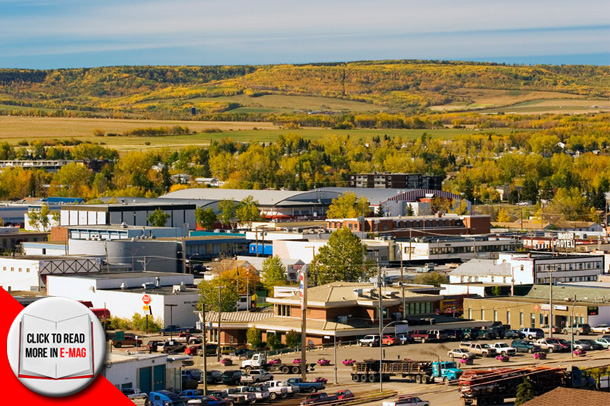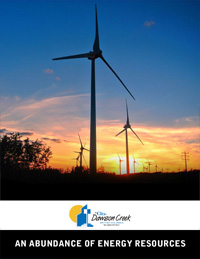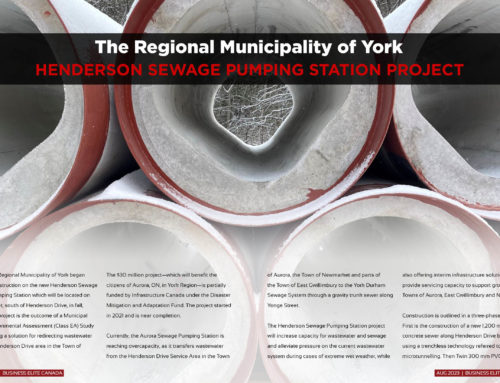An abundance of energy resources
By: Mudeeha Yousaf
The province of British Columbia has long been advocating more liquefied natural gas (LNG) activity on Canadian soil, and wishes to attract more awareness about the future of LNG demand in North America. To accommodate the investment boom, the municipality of Dawson Creek in northeastern British Columbia has been pivotal in improving Canada’s energy sector and is in the midst of several LNG projects, becoming amongst the first Canadian cities to latch on to this generational breakthrough. Located in the centre of Peace River County, the vibrant city aims to improve the quality of life of all citizens and secure a place in the nations, and the worlds, economic advancement plan.
Founded by George Mercer Dawson in the early 1900’s, the City of Dawson Creek strives to draw on its strong communal roots and rich history to build a stronger, sustainable community for the new generation. “In 1942 Dawson Creek exploded into the community it is now and in the mid-50’s it was incorporated as a full-fledged city,” shares Mayor Dale Bumstead who took the time to chat with Business Elite Canada about the city’s history, current endeavors and its significance. Being born and bred in Dawson Creek, Mayor Bumstead was the perfect candidate to lead the city to a new era of innovation, and after the bi-elections last September he became successful in doing just that. “I love the experience of living and being a part of the community. You learn as you go.” Today, the city has over 13, 000 residents, great infrastructure in place and is constantly striving for newer innovations. “We want to keep that peace going. Businesses are not a piece of paper and neither are the people in the community. We want to build a strong community.”
The proud British Columbian city is known for its 3-highway links – including the famous Alaska Highway – and rich agriculture, oil and gas, tourism, mining and forestry sectors. Though, Dawson Creek has recently transformed from an agricultural city to that driven by LNG, a phenomena that is revolutionizing the world’s energy sector, and is “transforming from agricultural to a community driven by the economic benefits that come from this natural gas development that’s occurring in the region.”
Natural gas, or the “unconventional resource” as Mayor Bumstead puts it, is the process of developing the reserve through shale gas – natural gas that is trapped within a shale formation and drilled, allowing the gas to flow naturally, and is a process different from the old way of drilling a hole and pumping the gas out. There are 12-15 LNG Plant proposals for the West Coast of BC, each with a processing capacity of 1.6 – 3.0 Billion cubic feet of natural gas per day to ship across international waters.
“If there are three, plants in the west coast of B.C., you’re talking about 8-10 billion cubic ft. of gas that will be produced on a daily basis,” says Bumstead. Currently in the northeast of B.C. there are 3.5 billion cubic ft. of gas proven reserves, though “we need to triple the production of gas available. It’s enormous the amount of potential that is coming from this development.”
As a major investment and milestone for the city, Dawson Creek will play host to the proposed AltaGas LNG site – a domestic plant that will be situated right in the heart of the city. The major gas company has chosen the city for the $22 million facility, and proposed the LNG plant to improve the quality of life for the remote communities in the area that rely solely on propane as their fuel source for heating. The plant would take the current supply from the city, liquefy it and ship it to the northern communities in Nunavut and the Northwest Territories so they can use natural gas as an alternative field source. The facility would mean an increase in tax revenues for the city and will “be more cost effective and a huge benefit to our economic development,” says Mayor Bumstead.
The cost to build an LNG plant in British Columbia, shares Bumstead, is approximately $7 billion and the cost to get the gas out of the ground, shipped and processed is around $50 billion to develop. “This investment into the city, Region, and the Province is a revolutionary phenomenon, is not only a transformation for the community but the entire province. We want to guide the development and be strategic about it. We want to make sure we build a vibrant and healthy community for the next 40 years.” The initiatives the Province is taking will drastically improve and expand worldwide energy supplies and bring attention for the need of more innovative, cost-effective, methods for fuel accessibility.
As well as revolutionizing the natural gas sector, Dawson Creek is on track to become one of the nation’s greenest cities, and will use the development of renewable energy and solar/wind farms to secure this record. “In the last 20 years we have shifted our focus in needing to be concerned about our footprint and what we’re doing to our region, area and country. We have the first wind farm on our border, and our city leaders and community have taken seriously to the practice of sustainability,” says Bumstead. “It’s a great community, and I get to work in my home town.”
The City of Dawson Creek is undoubtedly filled with tremendous potential and we wait to see how this green community will change the nation’s landscape for the better.







